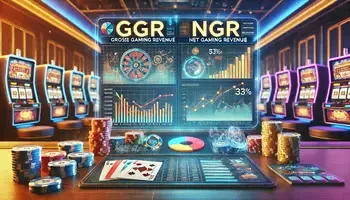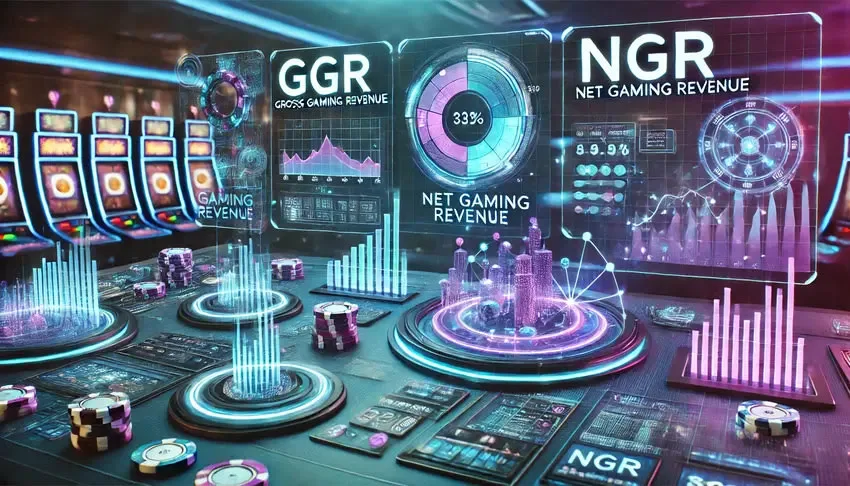
GGR and NGR: Key Metrics for Casino Operators
In the online casino industry, understanding financial metrics is crucial for both players and operators. Two of the most significant indicators used in the gambling business are GGR (Gross Gaming Revenue) and NGR (Net Gaming Revenue). These terms define the financial success of a casino and influence key business decisions. Without proper knowledge of these indicators, operators may struggle to manage profitability, while players may not fully understand how casinos operate.
For those engaging with platforms like Spillehallen casino, comprehending these revenue metrics can enhance their understanding of the industry’s financial mechanics. This article will break down what GGR and NGR mean, their differences, their impact on gambling operators, and how regulatory policies affect them.
What Is GGR (Gross Gaming Revenue)?
Gross Gaming Revenue (GGR) is the total amount of money wagered by players minus their winnings. In other words, it represents the amount a casino earns before any deductions such as operational costs, bonuses, or taxes. GGR is one of the primary indicators used to measure a casino’s financial performance and is widely utilized by industry analysts, regulators, and investors.
For example, if players wager a total of €10 million at Spillehallen casino and win €7 million, the GGR for that period would be €3 million. This figure does not account for other business expenses or promotional costs; it simply reflects the gross revenue from gaming activities.
GGR is essential because it provides an overview of how much revenue a casino is generating from player activity. However, it does not necessarily indicate profitability since numerous deductions must still be considered.
What Is NGR (Net Gaming Revenue)?
Net Gaming Revenue (NGR) is the revenue a casino retains after deducting bonuses, fees, taxes, and other operating expenses from the GGR. This is the actual profit that the casino can use for reinvestment, operational costs, or profit-sharing among stakeholders.
To illustrate, if Spillehallen casino has a GGR of €3 million but spends €500,000 on bonuses, €300,000 on licensing fees, and €1 million on operational costs and taxes, the NGR would be €1.2 million. This figure more accurately reflects the financial health of the casino compared to GGR.
Because NGR accounts for various expenses, it is a key metric for casino operators in evaluating profitability. A high GGR does not necessarily translate into a high NGR if expenses are too high.
Key Differences Between GGR and NGR
Although both metrics are crucial in the gambling industry, they serve different purposes. The primary difference is that GGR represents total revenue before deductions, whereas NGR accounts for all costs and expenses.
GGR is useful for determining overall player activity and market size, as it reflects the total money wagered minus winnings. On the other hand, NGR gives a clearer picture of how much actual revenue the casino retains after operational expenses and taxes.
For gambling operators, balancing both metrics is essential. A casino with a high GGR but low NGR may struggle financially due to excessive costs, while a casino with a lower GGR but high NGR is likely managing its finances more efficiently.

How GGR and NGR Affect Gambling Operators
Understanding and managing GGR and NGR is crucial for the success of a gambling business. Operators must analyze these metrics to determine their financial standing and make informed decisions regarding promotions, marketing strategies, and overall business development.
For instance, if Spillehallen casino notices that its NGR is decreasing despite a stable GGR, it may indicate rising operational costs or excessive bonus spending. In response, the casino may need to adjust its promotional offers or renegotiate supplier contracts.
Additionally, investors and stakeholders closely monitor these figures to assess profitability. A casino with a healthy NGR is more attractive to potential investors and business partners, as it demonstrates sustainable profitability.
The Role of Regulation and Taxation in GGR and NGR
Regulatory policies and taxation significantly impact both GGR and NGR. Many countries impose gambling taxes based on GGR, which means casinos must pay a percentage of their gross revenue regardless of their actual profitability.
For example, in some jurisdictions, a 20% tax on GGR means that if a casino generates €3 million in GGR, it must pay €600,000 in taxes. This can substantially reduce the NGR, making financial management even more critical for operators.
In contrast, some regulators base taxation on NGR, which is generally more favourable for operators as it accounts for expenses before taxation. Understanding these regulatory differences is essential for international casino operators looking to expand into new markets.
Real-World Examples of GGR and NGR Management
Successful casino operators carefully monitor and optimize their GGR and NGR to maximize profitability. A good example is how online casinos adjust their bonus structures to maintain a healthy balance between player incentives and profitability.
For instance, Spillehallen casino may offer welcome bonuses to attract new players but must ensure these promotions do not erode the NGR too significantly. By implementing wagering requirements and limiting bonus availability, the casino can maintain profitability while still appealing to new customers.
Another example is negotiating better terms with game providers and payment processors. Reducing transaction fees and optimising game revenue shares can significantly impact the casino’s bottom line, improving NGR without necessarily increasing GGR.
Similar articles
-
 Progressive Jackpots Explained: ...
Progressive Jackpots Explained: ...Progressive jackpots remain one of the most dynamic features in modern gambling. These …
-
 Casino Game Design: Why Specific...
Casino Game Design: Why Specific...The modern approach to casino game design is built on psychology, visual communication, …
-
 Ecology of the Gambling Industry...
Ecology of the Gambling Industry...The gambling industry continues to expand globally, influencing economies, cities, and local communities. …
-
 The Near-Miss Effect: Why Losing...
The Near-Miss Effect: Why Losing...The psychology of gambling has long fascinated researchers, and one of the most …
